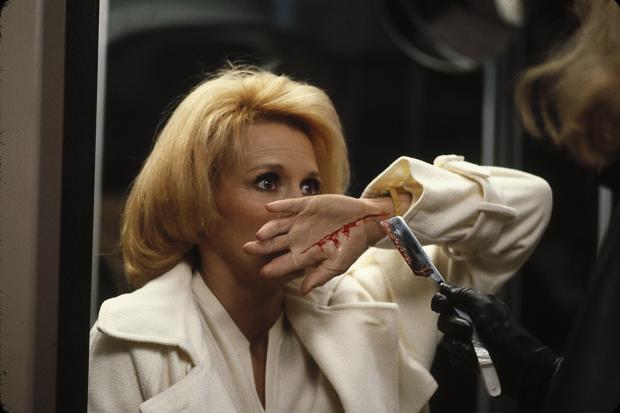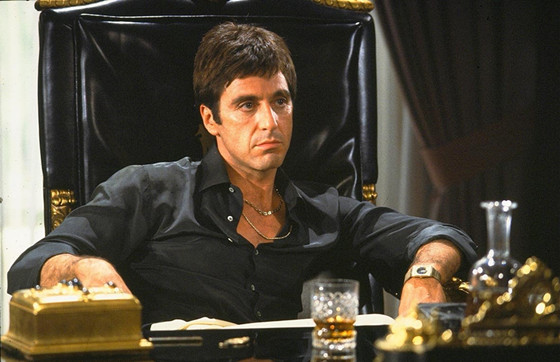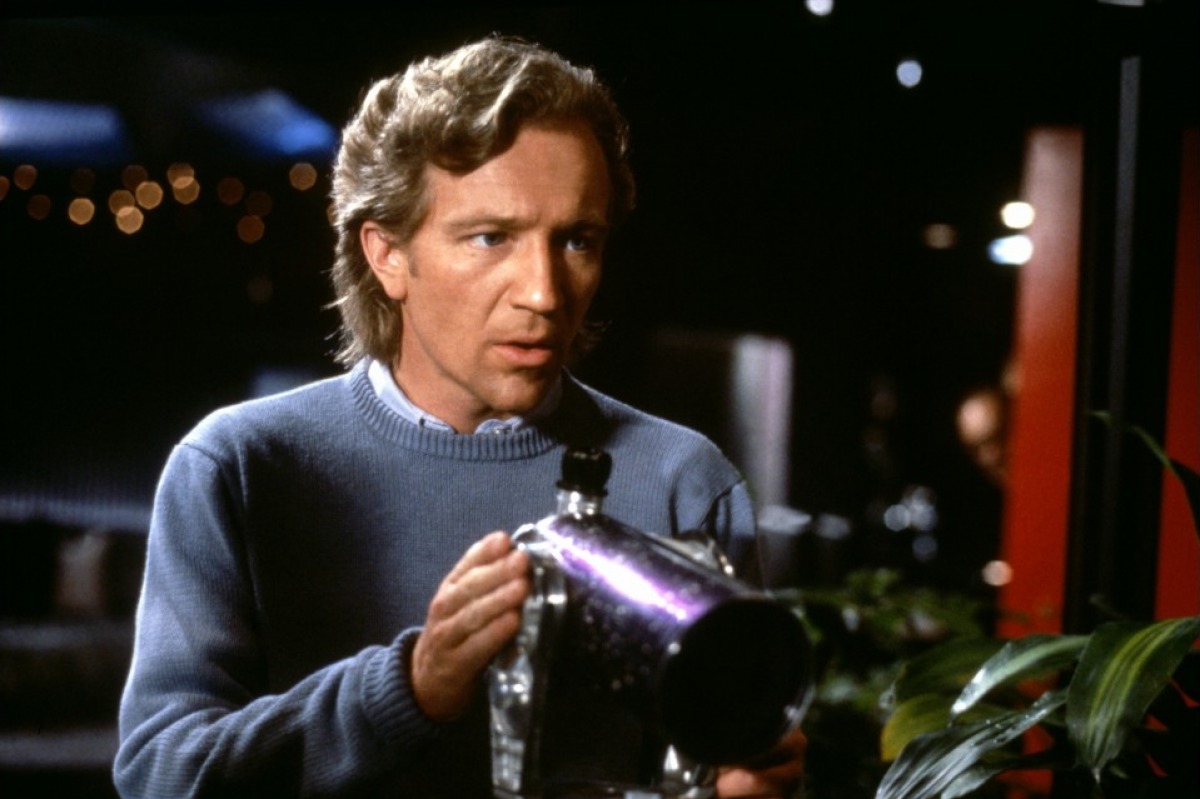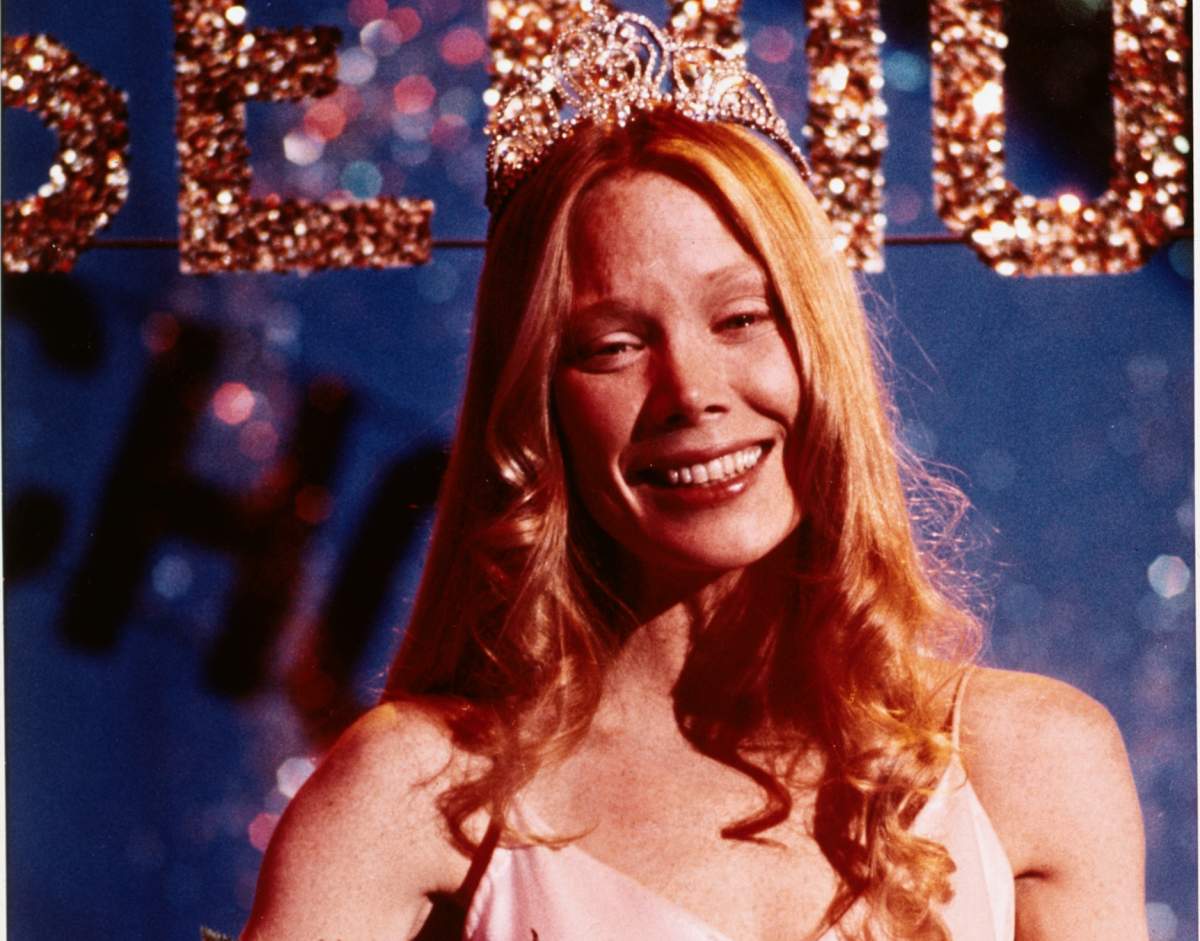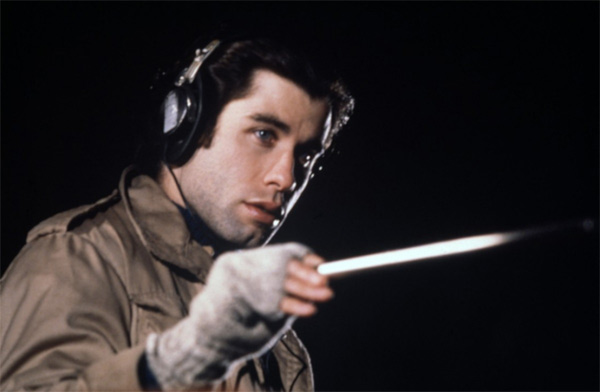6. Dressed to Kill (1980)
An almost beat for beat homage to Psycho with elements of Vertigo thrown in for good measure. This is the best example of De Palma utilizing pastiche and intertextualization to tell a compelling story. Sexually frustrated housewife Kate Miller (Angie Dickinson) has an affair with a man she meets in a museum.
When she is murdered by a mysterious blonde woman who is also a patient of Kate’s psychiatrist Robert (Michael Caine), high priced call girl Liz (Nancy Allen) who witnesses the murder works together with Kate’s son to catch the killer. If you know going in that this film is meant to have a dream like quality the entire time it will help you enjoy this interestingly stylish and suspenseful exploration of sexual identity.
Three Great Scenes: The stalking scene in the museum, The murder in the elevator, and the chase through the subway cars.
On a Side Note: Nancy Allen was nominated for both a Golden Globe and a Golden Raspberry for her performance.
5. Carlito’s Way (1993)
Probably De Palma’s most mature film came roughly ten years after he and Pacino changed the crime genre with Scarface. Pacino plays Puerto Rican gangster Carlito Brigante who is freed from jail on a technicality by his slimy lawyer Kleinfeld (Sean Penn). Carlito, while trying to live the clean life and reconnect with his old flame, Gail (Penelope Ann Miller), is dragged back into a world of violence and mistrust that ultimately leads to his doom. It features some of De Palma’s best set pieces and performances and proves that he isn’t as cold and calculating as many of his critics like to suggest.
Three Great Scenes: The scene in the pool hall, the hospital scene where Kleinfeld is killed, and the epic Grand Central Station finale.
On a Side Note: The name of Carlito’s nightclub “El Paraiso” is the same name as the food stand Tony Montana works at in the beginning of Scarface.
4. Scarface (1983)
De Palma, with the help of Oliver Stone, retold the original 1932 Scarface to take on the absurdity of the American dream by pushing everything to the extreme. Leaving Cuba during the Mariel exodus, Tony Montana (Al Pacino) sets his sights on taking over a drug cartel in Miami with the help of his best friend Manny (Steven Bauer) and becomes the notorious Scarface. This is a prime example of how De Palma was ahead of his time as it took years for it to be seen as the classic it is today. The scope, the colors, the violence, and Pacino’s over-the-top performance all make this satirical cautionary tale a one of a kind viewing experience.
Three Great Scenes: The drug deal that ends with a chainsaw, Omar (F. Murray Abraham) being hung to death from a helicopter, and the “say hello to my little friend” finale.
3. Body Double (1984)
The most “De Palmaesque” of his films, this acerbic send-up of the seediness of Hollywood uses elements of “Rear Window” and “Vertigo” to tell the story of claustrophobic B-movie actor Jake Scully (Craig Wasson) who is house sitting an “ultra-modern” mansion in the Hollywood Hills and gets himself caught up in the affairs of an attractive neighbor, Gloria (Deborah Shelton).
Remembering the tagline of the film, “You Can’t Believe Everything You See” and the star making performance of Melanie Griffith will help navigate you through the preposterous plot and its surrealist tone. Deeply misunderstood and flat out hated upon its release, this film showcases De Palma’s absurdist sense of humor and has since become considered one of the best satires of the 1980’s.
Three Great Scenes: Scully trailing Gloria through the mall and to the beach, Gloria being murdered by the “Indian”, The surreal Frankie Goes to Hollywood music video shoot on a porn set.
On a Side Note: Those that have read American Psycho know that this is Patrick Bateman’s favorite movie.
2. Carrie (1976)
Considered a classic in the horror genre, De Palma’s breakthrough hit earned both its stars (Sissy Spacek and Piper Laurie) Oscar nominations and brought Stephen King into the mainstream. This film about a bullied teen with an abusive fundamentalist religious nut for a mother who learns that she has the power of telekinesis is the perfect example of De Palma’s style serving a story so perfectly. All the slow motion, split screen, and dizzying camera moves is not just appropriate but seems to be the only way to truly capture the emotions supplied so well by all the performances in the film. Even some of the campiness works great and has helped it hold up so well.
Three Great Scenes: Tommy and his buddies trying on tuxes, the entire prom sequence, and the confrontation between Carrie and her mom during the finale.
On a Side Note: De Palma and George Lucas shared casting for the making of this and Star Wars.
1. Blow Out (1981)
In this Blow-Up meets The Conversation thriller, Jack (John Travolta), a sound designer for B horror movies, while out recording sounds at a park, witnesses a car accident and saves the passenger Sally (Nancy Allen) before the car sinks to bottom of a lake. When Jack discovers through the recording that there may have been a gunshot before the car crashed, he finds himself in grave danger and realizes that he may be caught up in something far more complicated.
If De Palma was pursuing a doctorate in filmmaking this movie would be his thesis film. Through the use of pastiche, he tells a story that explores the interaction of sound and images, and how they can be rearranged to reveal new truths or a lack of objective truth which is itself a commentary on our relationship with cinema. He does all this through the use of great suspenseful set pieces while also touching on all the common themes he explores in most of his work (guilt, voyeurism, and power).
Three Great Scenes: the opening Slasher film homage that ends with a terrible scream, Jack recording sounds and witnessing the car accident, and the sequence in the train station where Burke (John Lithgow) stalks and kills the prostitute that resembles Sally.
On a Side Note: In the French version, John Travolta’s voice was dubbed by Gerard Depardieu.
Author Bio: Alex Moore is a filmmaker living in Los Angeles with his B.A. in Drama and Comparative Literature from the University of Washington and a degree in film production from Vancouver Film School in Canada. He will definitely promote something when he has something to promote.
